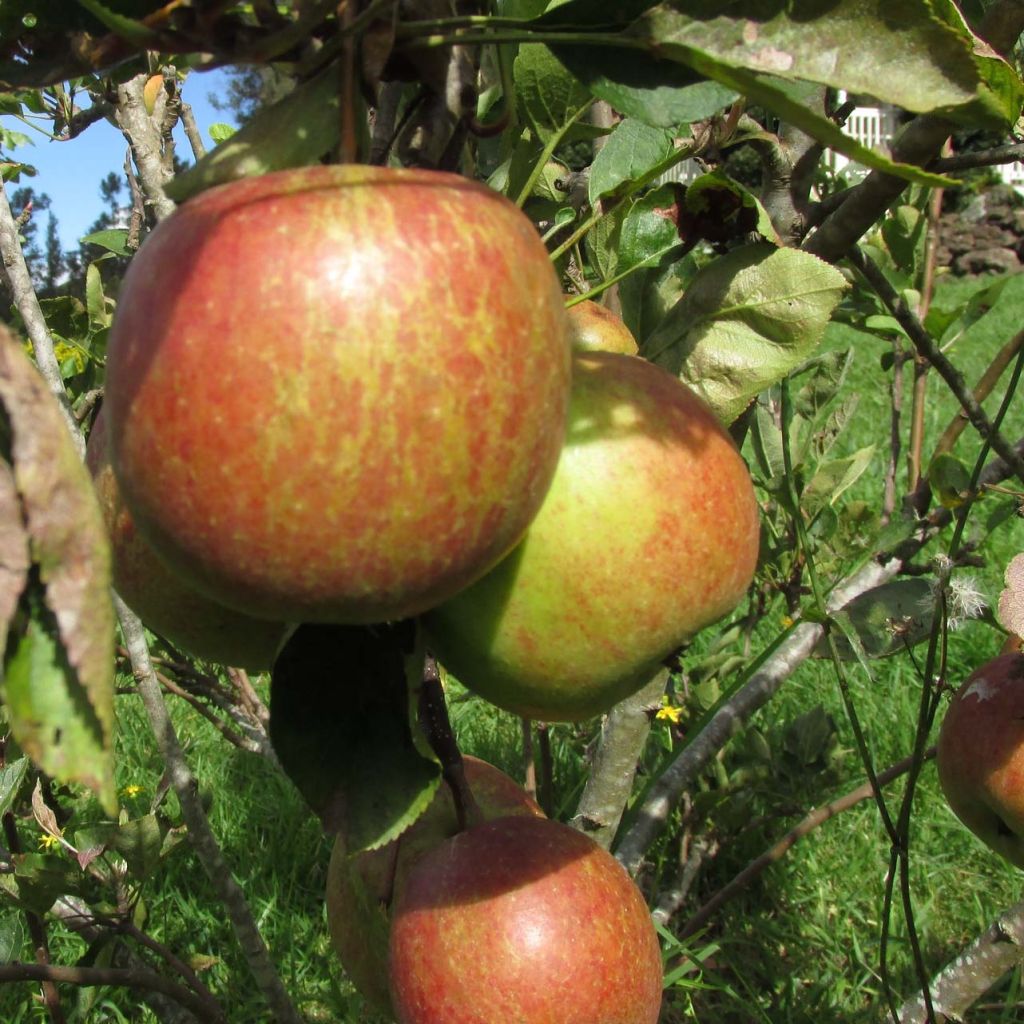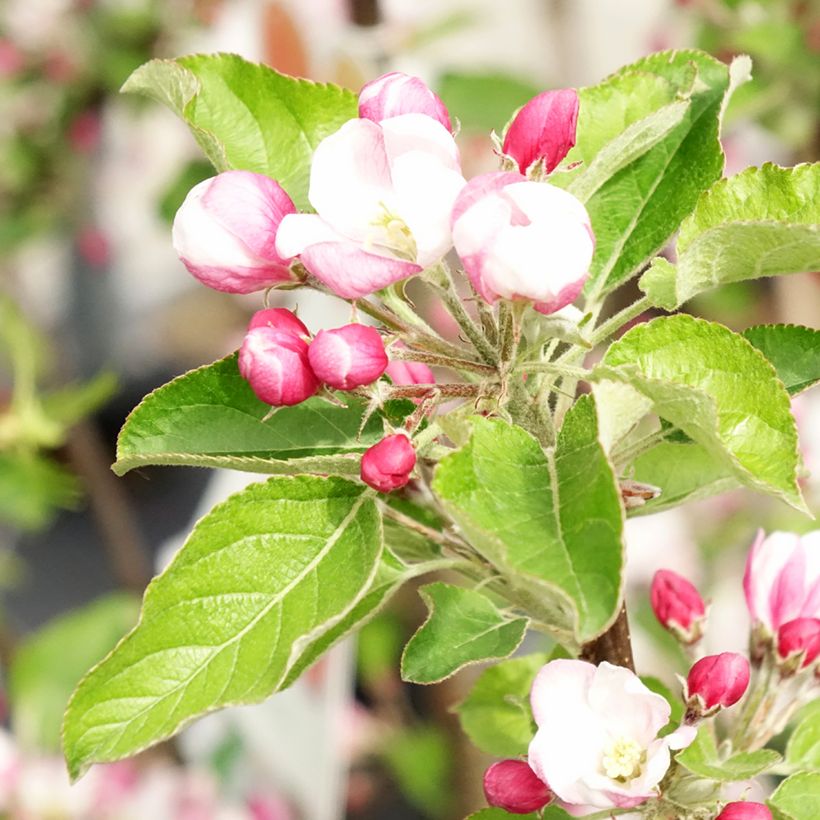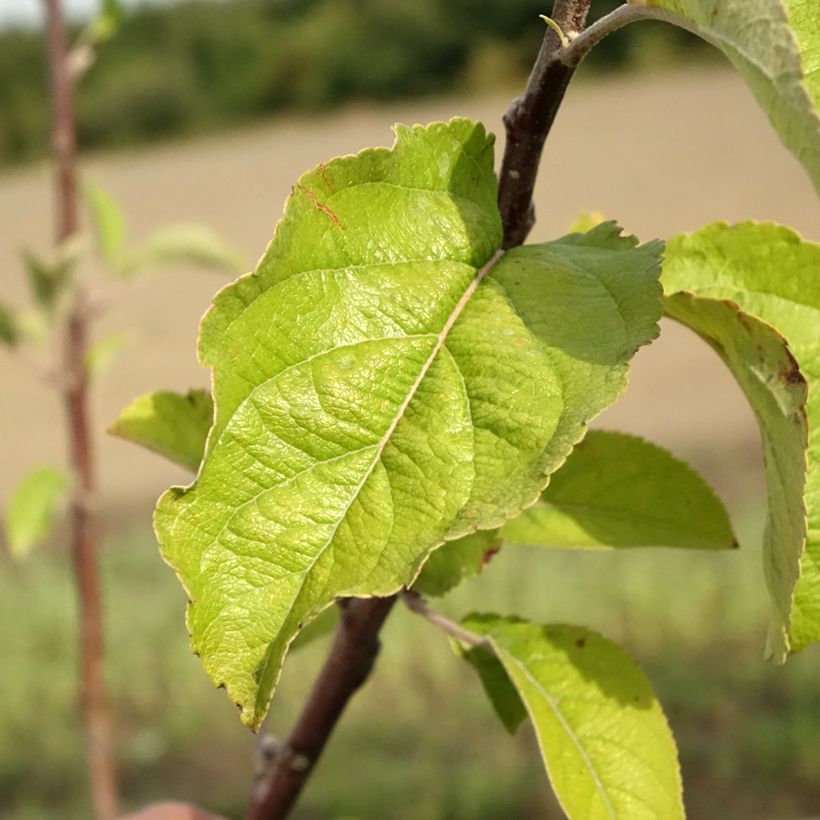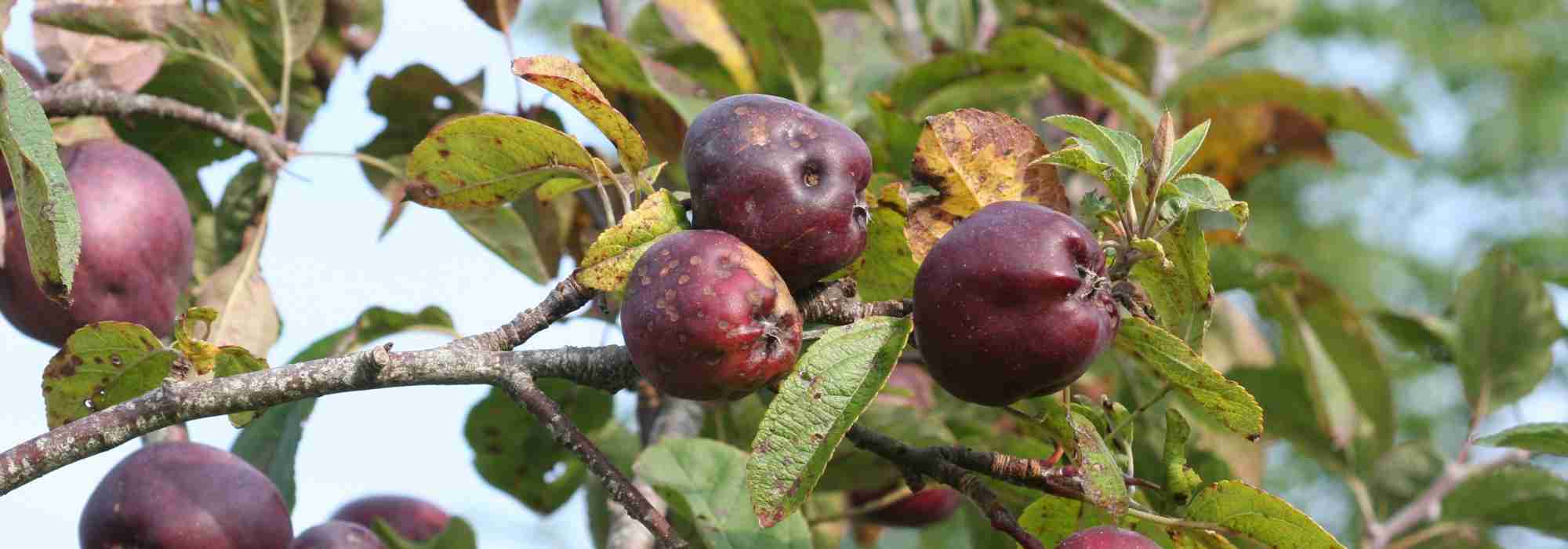

Apple Tree Braeburn - Malus domestica
Apple Tree Braeburn - Malus domestica
Malus domestica Braeburn
Apple, Orchard apple, Table apple, Cultivated apple
This apple tree has recovered well and has bloomed.
GÉRARD, 25/05/2025
Special offer!
Receive a €20 voucher for any order over €90 (excluding delivery costs, credit notes, and plastic-free options)!
1- Add your favorite plants to your cart.
2- Once you have reached €90, confirm your order (you can even choose the delivery date!).
3- As soon as your order is shipped, you will receive an email containing your voucher code, valid for 3 months (90 days).
Your voucher is unique and can only be used once, for any order with a minimum value of €20, excluding delivery costs.
Can be combined with other current offers, non-divisible and non-refundable.
Home or relay delivery (depending on size and destination)
Schedule delivery date,
and select date in basket
This plant carries a 6 months recovery warranty
More information
We guarantee the quality of our plants for a full growing cycle, and will replace at our expense any plant that fails to recover under normal climatic and planting conditions.

Description
The Braeburn apple tree is a very productive variety from a young age and the fourth best-selling apple in France after the Golden Delicious, Gala, and Granny Smith. Its medium-sized apples are delicious, striped and streaked with brick on a yellow-to-green background. And their crispy flesh, without being hard, is rather juicy, appreciated for its pleasantly tart flavour. An excellent apple for eating fresh, it can also be cooked into applesauce or used to garnish pastries.
The Braeburn apple tree was selected in New Zealand in 1950 and is believed to be a cross between Granny Smith's and Lady Hamilton's apple trees. It thrives in warm climates and takes several weeks (175 days) for its fruits to ripen; its apples are harvested in late October in France. They are consumed without delay and can be enjoyed until April. A tree of medium vigour bears them, hardy but quite susceptible to diseases (scab, mildew, rust, and fire blight). It blooms abundantly in April. It is a self-fertile variety, but a nearby Queen of the Pippins or Cox's Orange Pippin apple tree will further improve its productivity. We recommend thinning the fruits in early summer to obtain a harvest of good-sized fruits. The Braeburn apple tree is not subject to alternate bearing; its production is regular and bears fruit from a young age.
The apple tree (Malus domestica) is a fruit tree that belongs to the Rosaceae family. It is cultivated almost everywhere in the world and includes countless varieties, ancient or modern, that produce apples of varying sizes and flavours, from sweet to tart. Apple trees are native to Europe, where their presence has been documented since antiquity. Hardy, sometimes up to -30 °C (- 22°F) for the most resistant varieties, they can be grown almost anywhere.
The size of the domestic apple tree does not exceed ten metres in height and is almost as wide. This site can be even smaller depending on the rootstock's vigour. This fruit tree generally has a high trunk that naturally spreads out. It comes in various forms (bush, half-standard, standard, etc.) and can be trained in many ways (column, cordon, espalier, etc.)
The apple tree leaves are deciduous and arranged alternately on the branches. Their lamina is ovate and toothed. They have a dark green upper surface and a whitish lower surface, slightly downy. In spring, the apple tree bears white or pale pink flowers grouped in corymbs. The flowers of the apple tree consist of 5 petals, surrounding a core composed of about 20 stamens. They give rise to fleshy, spherical fruits (botanically drupes) filled with pips. Their colour, size, flavour, and shelf life vary depending on the variety. Rarely self-fertile, the apple tree is a fruit tree that often requires the presence of other apple trees, blooming simultaneously and nearby, to bear fruit.
The apple tree can be grown in all climates, but it particularly appreciates temperate, relatively humid regions, such as Normandy. It thrives in sunny locations with reasonably moist and fertile soil. It is traditionally grown in orchards but can also be cultivated as a standalone tree or hedge. It is an easy fruit tree that requires at least some pruning. Proper fruiting pruning will prevent the alternate bearing phenomenon (fruiting every other year). An annual or biennial application of well-decomposed compost also promotes apple tree productivity.
Apple Tree Braeburn - Malus domestica in pictures






Plant habit
Fruit
Flowering
Foliage
Botanical data
Malus
domestica
Braeburn
Rosaceae
Apple, Orchard apple, Table apple, Cultivated apple
Cultivar or hybrid
Planting and care
Choose a sunny location for your Braeburn; the soil can be slightly chalky or acidic but not excessively. Dig a large planting hole at least three times the volume of the root ball. Simultaneously add organic matter (topsoil, compost...) and a base fertiliser such as bonemeal. Do not bury the graft collar. Stake if necessary. Water generously, even in winter, even if it rains. Fruit trees are ideally planted between October and March, outside of the freezing period. Container-grown plants can be grown year-round except during high heat or frost periods.
In winter, you can add a small handful of wood ash, rich in potash, to improve fruiting. Monitor for potential aphid attacks during the season. A white powdery coating caused by a fungus, powdery mildew, may appear on the leaves in summer, but it does not harm fruit development in gardens. Harvest takes place in September—only store picked fruits—store apples with the stem downwards, on shelves or in crates. Choose a preferably completely dark, dry, cool location but frost-free.
Planting period
Intended location
Care
Planting & care advice
-
, onOrder confirmed
Reply from on Promesse de fleurs
Haven't found what you were looking for?
Hardiness is the lowest winter temperature a plant can endure without suffering serious damage or even dying. However, hardiness is affected by location (a sheltered area, such as a patio), protection (winter cover) and soil type (hardiness is improved by well-drained soil).

Photo Sharing Terms & Conditions
In order to encourage gardeners to interact and share their experiences, Promesse de fleurs offers various media enabling content to be uploaded onto its Site - in particular via the ‘Photo sharing’ module.
The User agrees to refrain from:
- Posting any content that is illegal, prejudicial, insulting, racist, inciteful to hatred, revisionist, contrary to public decency, that infringes on privacy or on the privacy rights of third parties, in particular the publicity rights of persons and goods, intellectual property rights, or the right to privacy.
- Submitting content on behalf of a third party;
- Impersonate the identity of a third party and/or publish any personal information about a third party;
In general, the User undertakes to refrain from any unethical behaviour.
All Content (in particular text, comments, files, images, photos, videos, creative works, etc.), which may be subject to property or intellectual property rights, image or other private rights, shall remain the property of the User, subject to the limited rights granted by the terms of the licence granted by Promesse de fleurs as stated below. Users are at liberty to publish or not to publish such Content on the Site, notably via the ‘Photo Sharing’ facility, and accept that this Content shall be made public and freely accessible, notably on the Internet.
Users further acknowledge, undertake to have ,and guarantee that they hold all necessary rights and permissions to publish such material on the Site, in particular with regard to the legislation in force pertaining to any privacy, property, intellectual property, image, or contractual rights, or rights of any other nature. By publishing such Content on the Site, Users acknowledge accepting full liability as publishers of the Content within the meaning of the law, and grant Promesse de fleurs, free of charge, an inclusive, worldwide licence for the said Content for the entire duration of its publication, including all reproduction, representation, up/downloading, displaying, performing, transmission, and storage rights.
Users also grant permission for their name to be linked to the Content and accept that this link may not always be made available.
By engaging in posting material, Users consent to their Content becoming automatically accessible on the Internet, in particular on other sites and/or blogs and/or web pages of the Promesse de fleurs site, including in particular social pages and the Promesse de fleurs catalogue.
Users may secure the removal of entrusted content free of charge by issuing a simple request via our contact form.
The flowering period indicated on our website applies to countries and regions located in USDA zone 8 (France, the United Kingdom, Ireland, the Netherlands, etc.)
It will vary according to where you live:
- In zones 9 to 10 (Italy, Spain, Greece, etc.), flowering will occur about 2 to 4 weeks earlier.
- In zones 6 to 7 (Germany, Poland, Slovenia, and lower mountainous regions), flowering will be delayed by 2 to 3 weeks.
- In zone 5 (Central Europe, Scandinavia), blooming will be delayed by 3 to 5 weeks.
In temperate climates, pruning of spring-flowering shrubs (forsythia, spireas, etc.) should be done just after flowering.
Pruning of summer-flowering shrubs (Indian Lilac, Perovskia, etc.) can be done in winter or spring.
In cold regions as well as with frost-sensitive plants, avoid pruning too early when severe frosts may still occur.
The planting period indicated on our website applies to countries and regions located in USDA zone 8 (France, United Kingdom, Ireland, Netherlands).
It will vary according to where you live:
- In Mediterranean zones (Marseille, Madrid, Milan, etc.), autumn and winter are the best planting periods.
- In continental zones (Strasbourg, Munich, Vienna, etc.), delay planting by 2 to 3 weeks in spring and bring it forward by 2 to 4 weeks in autumn.
- In mountainous regions (the Alps, Pyrenees, Carpathians, etc.), it is best to plant in late spring (May-June) or late summer (August-September).
The harvesting period indicated on our website applies to countries and regions in USDA zone 8 (France, England, Ireland, the Netherlands).
In colder areas (Scandinavia, Poland, Austria...) fruit and vegetable harvests are likely to be delayed by 3-4 weeks.
In warmer areas (Italy, Spain, Greece, etc.), harvesting will probably take place earlier, depending on weather conditions.
The sowing periods indicated on our website apply to countries and regions within USDA Zone 8 (France, UK, Ireland, Netherlands).
In colder areas (Scandinavia, Poland, Austria...), delay any outdoor sowing by 3-4 weeks, or sow under glass.
In warmer climes (Italy, Spain, Greece, etc.), bring outdoor sowing forward by a few weeks.







































